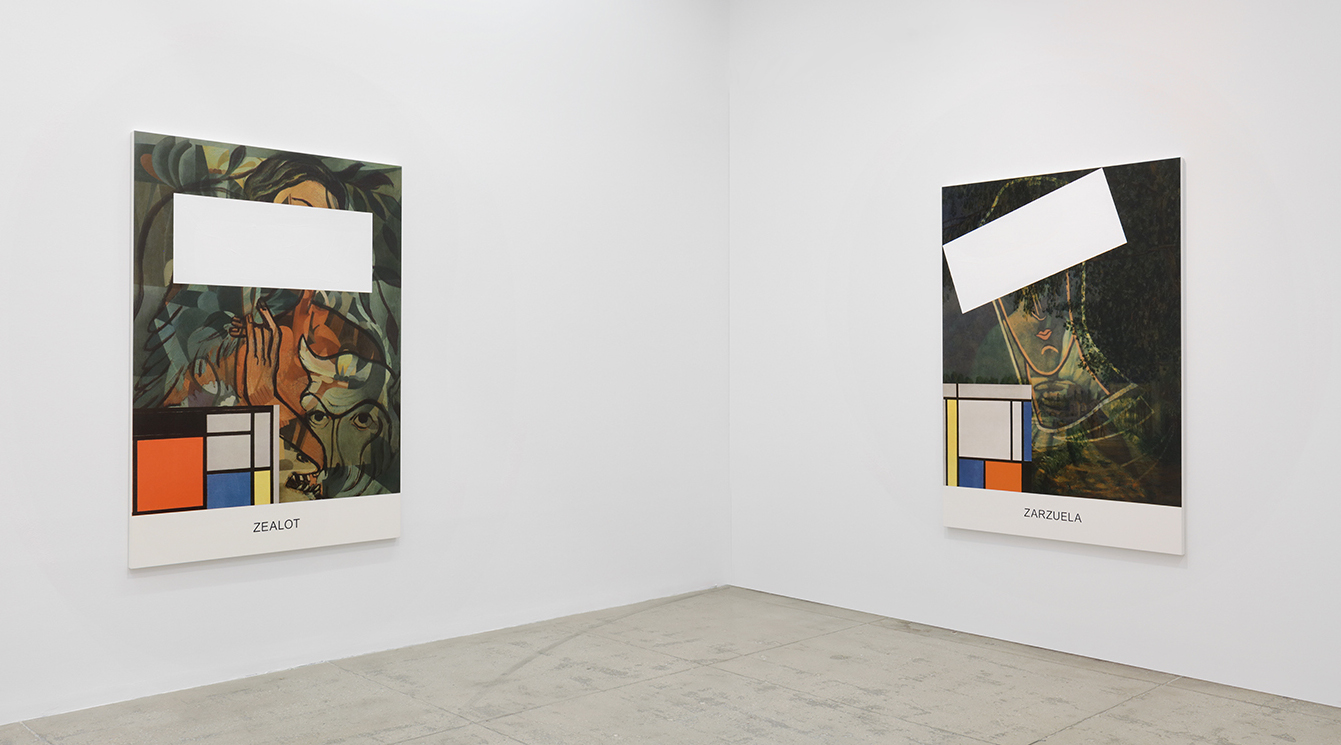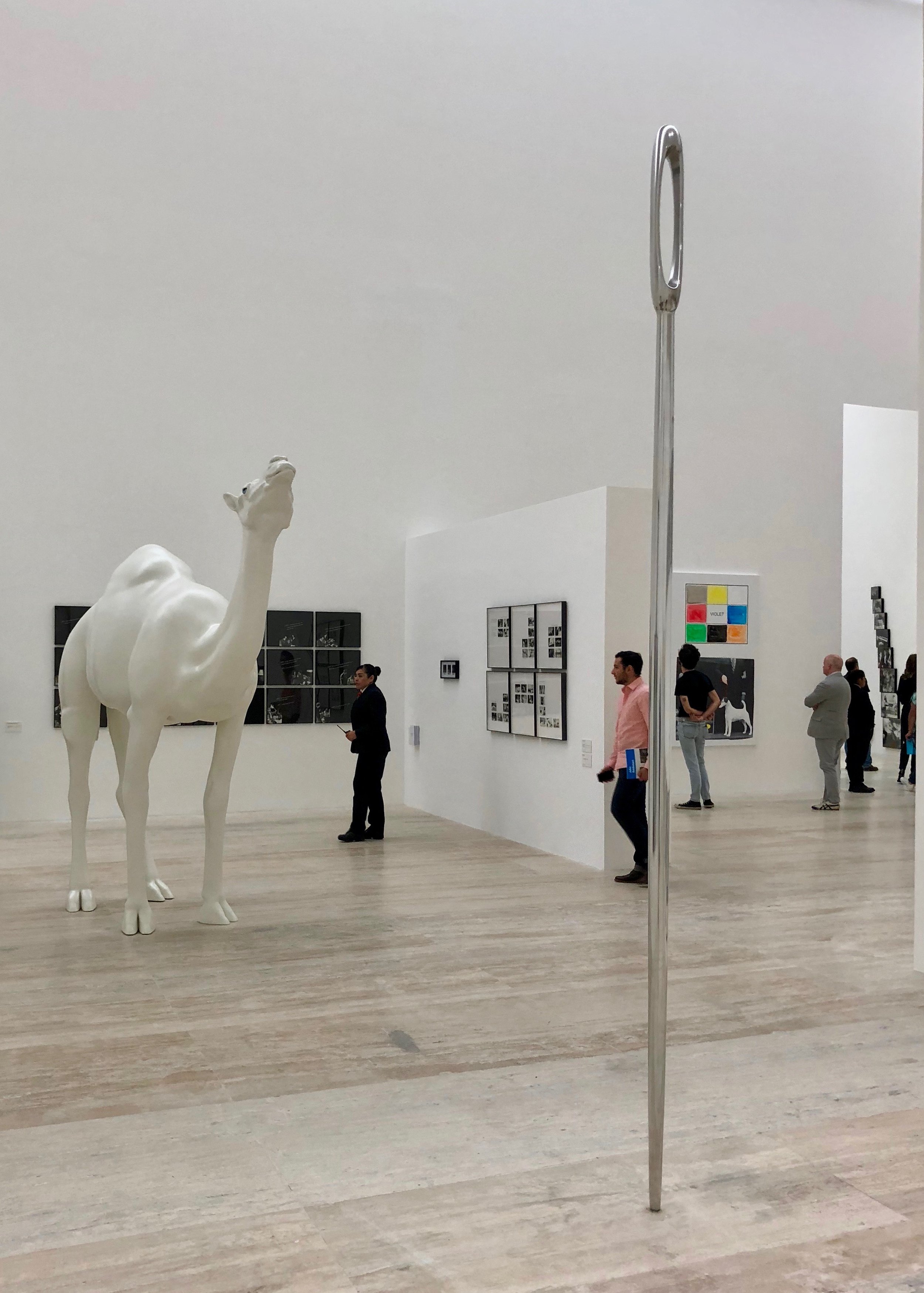John Baldessari's newest sculpture is Penguin, 2018. The work has been installed in London's Regent's Park for Frieze Sculpture 2018, featuring 25 artists and running through October 7th.
News
Something in the Air
Recent Instagram posts suggest a summer forecast of sunny skies with a chance of clouds.
John Baldessari at Marian Goodman Gallery
Congratulations to John Baldessari on his exhibition at Marian Goodman Gallery, New York. All Z's (Picabia/Mondrian) will be on view until June 22.
Learning to Read with John Baldessari Exhibition Catalogue
Learning to Read With John Baldessari at Museo Jumex
Beyer Projects congratulates John Baldessari on the opening of Learning to Read With John Baldessari at Museo Jumex. This major survey exhibition features more than 50 works, including two of our collaborations with the artist: Camel (Albino) Contemplating Needle (Large), 2013, and Fake Carrot, 2013.
Introducing Lead Cloud by John Baldessari
Beyer Projects is pleased to announce Lead Cloud, a new edition by John Baldessari.
Animality at Marian Goodman Gallery, London
Marian Goodman Gallery's London branch has opened Animality, an exhibition curated by Jens Hoffmann. The show includes Camel (Albino) Contemplating Needle (Large) by John Baldessari, alongside works by a diverse list of 70+ artists.
John Baldessari in LACMA's L.A. Exuberance: New Gifts by Artists
LACMA's L.A. Exuberance: New Gifts by Artists is a snapshot of the city's dynamic artist community. The exhibition includes Fake Carrot by John Baldessari, as well as a trove of works donated from the artist's personal collection. Through April 2, 2017
John Baldessari at the Philharmonie de Paris
Beethoven's Trumpet (with Ear) by John Baldessari is on view in Paris through January 29, 2017. The work is included in Ludwig Van: The Beethoven Myth at the Philharmonie de Paris.
Beethoven’s life and legacy have become phenomenons that reach well beyond the realm of high culture. The Ludwig van exhibition reproduces his fascinating aura of popularity, which rivals that of political icons and rock stars… From Gustav Klimt to Joseph Beuys, André Gide to Michael Haneke, Edward Burne-Jones to Antoine Bourdelle, John Baldessari, Stanley Kubrick and Pierre Henry, the ghost of Beethoven has continued to haunt artists and fulfil its purpose: to electrify the eye, the ear and the mind. (Philharmonie de Paris)
Book Release - Portraits of Artists by Manfredi Gioacchini
Portraits of Artists, shot by Italian photographer Manfredi Gioacchini, features 27 Los Angeles-based artists in their studios. The book includes two images of John Baldessari with an early half-scale model of Fake Carrot.
Rennie Collection, Winter 2015: Collected Works
Vancouver's Rennie Collection will open Winter 2015: Collected Works on January 23, 2016. The exhibition will present the work of 41 artists, including Tavares Strachan and John Baldessari:
John Baldessari's (b. 1931) larger-than-life Camel (Albino) Contemplating Needle (Large) (2013) casts its meditative gaze towards the eye of the adjacent towering needle, illuminating a confluence of beliefs and connecting cultures that have drifted apart through the course of history. (click for full press release)
Sound: An Acoulogical Treatise
John Baldessari's Ear Trumpet appears on the cover of the new English translation of Michael Chion's Sound: An Acoulogical Treatise (Duke University Press Books).
First published in French in 1998, revised in 2010, and appearing here in English for the first time, Michel Chion's Sound addresses the philosophical, interpretive, and practical questions that inform our encounters with sound. Chion considers how cultural institutions privilege some sounds above others and how spurious distinctions between noise and sound guide the ways we hear and value certain sounds. He critiques the tenacious tendency to understand sounds in relation to their sources and advocates "acousmatic" listening—listening without visual access to a sound’s cause—to disentangle ourselves from auditory habits and prejudices. Yet sound can no more be reduced to mere perceptual phenomena than encapsulated in the sciences of acoustics and physiology. As Chion reminds us and explores in depth, a wide range of linguistic, sensory, cultural, institutional, and media- and technologically-specific factors interact with and shape sonic experiences. Interrogating these interactions, Chion stimulates us to think about how we might open our ears to new sounds, become more nuanced and informed listeners, and more fully understand the links between how we hear and what we do. (Amazon)
John Baldessari at Art Catalogues
John Baldessari's Fake Carrot and Water on the Brain have just arrived at Art Catalogues, our favorite destination for current and out of print books on art, architecture, and design. Art Catalogues at LACMA, 5905 Wilshire Boulevard, Los Angeles, CA 90036. Through October 29, 2015.
Fake Carrot
Introducing Fake Carrot, John Baldessari's new sculpture. Thank you Art Catalogues and wHY Architecture for a wonderful debut.
The Art of Music
The Art of Music is open at the San Diego Museum of Art and features John Baldessari's Ear Trumpet. See the exhibition through February 7, 2016 in Balboa Park - just 5 miles from Baldessari's home town of National City, CA.
John Baldessari Honored at the 2015 MOCA Gala
It's a John Baldessari World debuted at Saturday's 2015 MOCA Gala honoring John Baldessari. The video features tributes from Ed Ruscha and Lawrence Weiner. Congratulations, John.
John Baldessari at Crystal Bridges
This just in: Beethoven's Trumpet (with Ear) by John Baldessari is on view at the Crystal Bridges Museum of Modern Art. The work is part of the museum's permanent collection, and was included in the inaugural exhibition, Wonder World (2011-2012).
John Baldessari at Art Catalogues, LACMA
Beyer Projects is pleased to announce a collaboration with Art Catalogues at LACMA. Through April 1st, see John Baldessari's maquette for Camel (Albino) Contemplating Needle (Large) alongside rare and out of print Baldessari publications.
A Brief History of John Baldessari
Click the image for video
LACMA produced this fantastic video to honor John Baldessari and Clint Eastwood at their 2011 Art + Film gala. At 400,000+ views and climbing, this short has to be one of the most entertaining artist profiles we've ever seen. An Ear Trumpet poster is visible behind Baldessari's desk, beginning at 0'11".
John Baldessari Brain/Cloud Mural in La Jolla, CA
Murals of La Jolla installed John Baldessari's Brain/Cloud (with Seascape and Palm Tree) in 2011. The work references Brain/Cloud (2007), from the artists's Pure Beauty retrospective exhibition. When in La Jolla, enjoy the view over lunch at Georges at the Cove.













